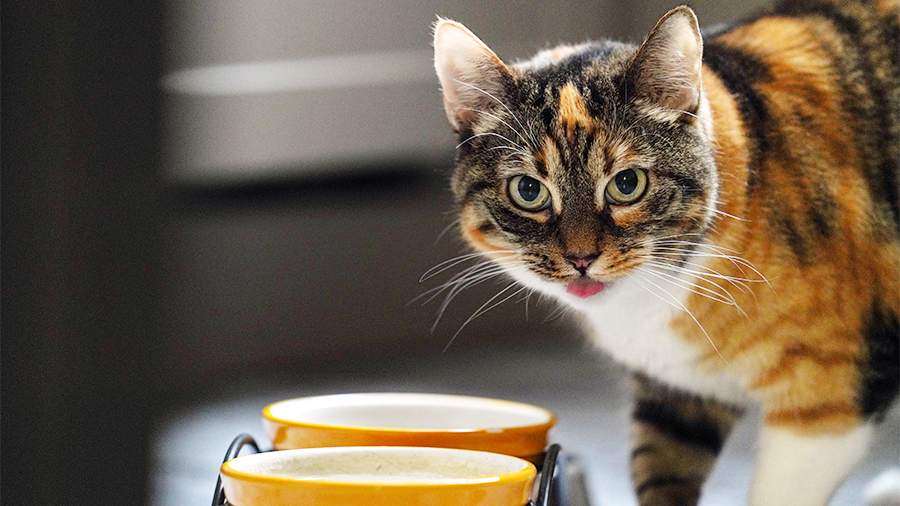How to choose food for a cat - practical advice from veterinarians

A cat needs a balanced diet containing meat, vitamins and useful additives for a complete nutrition. A cat's health and development largely depend on the quality of the diet. Izvestia tells us what to pay attention to when choosing a cat food.
What kind of food to choose for a cat - dry or wet?
Both dry and wet food are suitable for the pet. However, each has its own advantages and disadvantages. Dry food perfectly removes plaque, cleans the oral cavity and is useful for kittens during the period of changing milk teeth. In addition, it can be poured into a bowl, leaving it for the whole day or for a long absence from home.
A serious disadvantage of dry food is that the feeling of satiety comes later. The cat eats more than normal, which can lead to obesity. To control weight, the food should be portioned.
Wet food, unlike dry food, compensates well for the lack of moisture. However, if a cat eats wet food all the time, it may develop oral health problems.
Veterinarians recommend combining the two types of food, but giving them separately. This will ensure proper digestion and good assimilation of the product. For example, if the advantage is given to dry food, then once a day you can give a bag of wet. But it is better to choose products from the same manufacturer.
What should be the composition of cat food?
When buying industrial feeds, it is very important to pay attention to the composition of the ingredients. The list of components should be indicated on the labels in decreasing order of content.
In the first place in the composition cite the type of meat: turkey, chicken, beef, rabbit or salmon. And it is important to take into account that the meat can be different - natural or dehydrogenated.
In the first case, it is necessary to look at the percentage content of the product. For example, fresh chicken meat 55%, lamb meat 49%, etc. Dehydrated feed is also made from natural meat, but in the production process, moisture is removed from it. In this case, all useful components are preserved, and the shelf life of the feed is longer.
Lower in quality are feeds made from by-products or so-called "meat ingredients". If the package does not indicate what these ingredients are and their percentage ratio, it is better to refuse the purchase. Often such feeds consist of meat waste. They often add soy, preservatives, chemical additives and flavor enhancers, which affects the price of products. But in this case, cheap does not mean good, especially when it comes to the health of the pet.
In addition to meat, the composition of feeds also includes cereals (rice, oats, millet, barley), chicken or fish oil, sunflower or linseed oil, vitamins and amino acids. Large manufacturers always indicate information about them on the package.
Classification of cat food
All cat food is divided into several types. To the cheapest are the feeds of the economy class. As a rule, they contain a large amount of cereals with a low meat content. Therefore, the daily norm is much higher than that of high-quality feeds.
The optimal option is considered to be premium and superpremium class feeds. These are balanced feeds with a high content of meat, vitamins and minerals. They are produced in different lines: for kittens, adult and elderly cats. They also often contain recommendations on the daily diet depending on the age and weight of the pet.
The highest quality feeds are the new generation holistic feeds. The main principle of this type of food is a completely natural composition. In their manufacture they use selected ingredients, taking into account all the needs of the animal's body, including vitamin and mineral complexes and other useful additives. They are ideal for cat nutrition, especially during pregnancy and lactation.
There are also lines of special therapeutic and preventive products: for cats with sensitive digestion, for the prevention of kidney disease, for animals after sterilization and those prone to allergies. If the cat has any diseases, the veterinarian will help to choose the food and the optimal balance of nutrition.
Earlier "Izvestia" told when and what vaccinations should be given to a cat.
Переведено сервисом «Яндекс Переводчик»
